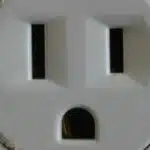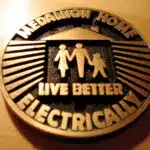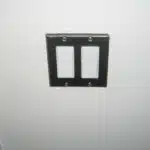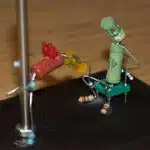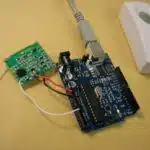Circuit breakers are an essential safety feature in all electrical systems. They protect your home from electrical overloads, short circuits, and other events that can cause damage or fire. However, sometimes circuit breakers trip and need to be reset. Resetting a circuit breaker is a relatively simple process, but it requires some basic knowledge of electrical safety and equipment.
As an electrical engineer, I have seen many cases where people try to reset circuit breakers without proper knowledge or training. This can lead to dangerous situations such as electrocution or fires. In this article, I will provide step-by-step instructions on how to safely reset a circuit breaker. Whether you are a homeowner or a professional electrician, this guide will help you keep your electrical system safe and reliable for years to come.
Understanding Circuit Breakers
Circuit breakers are critical components of any electrical system. They protect equipment from damage by interrupting the flow of electricity in case of a fault or overload. There are two main types of circuit breakers: thermal and magnetic. Thermal circuit breakers work by responding to temperature changes, while magnetic circuit breakers use electromagnets to trip when current exceeds a certain level.
It is essential to maintain circuit breakers properly to ensure their reliable operation. Periodic testing and inspection can identify issues before they cause problems. Circuit breaker maintenance should include cleaning the contacts and inspecting for signs of wear or damage. It is also important to make sure that the breaker is appropriately sized for the load it protects.
Ignoring routine maintenance can lead to safety hazards, equipment damage, and downtime. With a well-maintained circuit breaker, you can avoid these risks and keep your electrical system running smoothly. In the next section, we will discuss how to identify a tripped circuit breaker and reset it if necessary.
Identifying A Tripped Circuit Breaker
To identify a tripped circuit breaker, start by looking at the position of each breaker in the panel. The one that has moved to the middle or off position is likely the culprit. If you are still unsure which breaker caused the power outage, try turning off all of them and then turning them back on one at a time until you find the one that won’t reset.
Troubleshooting tips for preventing circuit breaker tripping include checking for overloaded circuits, faulty wiring, and damaged appliances. Make sure your electrical system can handle the amount of power you are using and avoid using too many high-wattage appliances at once. If you suspect faulty wiring or damaged appliances, seek professional help immediately.
Preventing circuit breaker tripping can save you time and money in the long run. By following these troubleshooting tips and ensuring that your electrical system is up to code, you can avoid unnecessary power outages and costly repairs. Keep in mind that safety should always come first when dealing with electricity, so if you are unsure about any aspect of your electrical system, don’t hesitate to call a licensed electrician for assistance.
For further steps in resetting a circuit breaker, it’s important to turn off all appliances before flipping the breaker switch back on. This will prevent any sudden surges in power that could cause the newly reset breaker to trip again immediately. Remember to take caution when handling electrical equipment and never attempt any repairs or maintenance without proper training or certification.
Turning Off All Appliances
Sometimes, it may be necessary to turn off all appliances in your home. This can be due to a power surge or simply the need for maintenance. Whatever the reason may be, it is important to know how to properly turn off all appliances in order to prevent any potential hazards.
Firstly, it is important to unplug all of your appliances from their electrical outlets. This will prevent any accidental power surges that could cause damage to your appliances or even cause a fire. Additionally, unplugging your appliances when not in use can also help save energy and reduce your electricity bill.
Secondly, make sure that all lights are turned off and fans are switched off as well. Keeping these items running unnecessarily can also contribute to an increase in electricity usage and cost. By turning them off when not in use, you can help ensure a more efficient use of energy.
Lastly, if you have a circuit breaker panel in your home, locate it and switch off the main breaker switch. This will shut down all electrical power in your home and ensure that no electricity is flowing through any electrical outlet or appliance. Power surge prevention and appliance maintenance are important for maintaining the longevity of your appliances and ensuring safety within your home.
Now that you have successfully turned off all appliances, let’s move on to locating the circuit breaker panel.
Locating The Circuit Breaker Panel
A circuit breaker panel is an important safety device in any home, as it helps to protect the wiring and electrical equipment from overloads.
In order to identify the circuit breaker panel, it is important to know the type of electrical service that is provided to the home.
Generally, the circuit breaker panel is located near the main entrance of the home.
To access the panel, the cover must first be removed by unscrewing the screws using a screwdriver.
Once the cover is removed, the individual breakers can be located and reset as needed.
It is important to note that when resetting the breakers, the main breaker must be switched off and then back on again in order to reset all the breakers in the panel.
Identifying The Circuit Breaker Panel
When it comes to resetting a circuit breaker, the first step is identifying the circuit breaker panel. This can be a daunting task for someone who is not familiar with electrical systems. However, there are a few key things to keep in mind that will make this process easier and safer.
One common mistake people make is assuming that their circuit breaker panel is located in an obvious place, such as near their main electrical meter or fuse box. However, this is not always the case. In some homes, the panel may be tucked away in a closet or basement. To avoid wasting time searching for the panel, it’s important to consult your home’s blueprints or ask the previous owner where it is located.
Safety guidelines should also be followed when identifying the circuit breaker panel. Before opening anything electrical, ensure that you have turned off all power sources to your home. This means unplugging all appliances and turning off any other power sources connected to your home’s electrical system. Additionally, do not touch any exposed wires or metal parts while locating the circuit breaker panel. By following these guidelines and taking caution when identifying your circuit breaker panel, you can safely reset any tripped breakers and restore power to your home.
Locating The Circuit Breaker Panel In The Home
Locating the circuit breaker panel in a home is essential for resetting any tripped breakers and restoring power. As an electrical engineer, it is important to understand the process of identifying the panel, which may not always be located in an obvious place. In fact, determining where the panel is located can be a daunting task for those who are not familiar with electrical systems.
To begin, homeowners should check their blueprints or ask the previous owner where the circuit breaker panel is located. It is also important to follow safety guidelines when attempting to locate the panel. This includes turning off all power sources to the home before opening anything electrical and avoiding touching any exposed wires or metal parts while searching for the panel. By taking necessary precautions, homeowners can safely identify their circuit breaker panel and move on to checking circuit breaker compatibility.
Once located, troubleshooting tips should be followed to ensure that any tripped breakers are reset properly. Homeowners can start by identifying which breaker has tripped and then flipping it back into its original position. However, if this does not solve the problem, there may be an issue with the circuit itself that requires further investigation or professional assistance.
In summary, locating the circuit breaker panel in a home requires careful attention to detail and adherence to safety guidelines. By checking blueprints or consulting with previous owners and following troubleshooting tips, homeowners can successfully identify their panels and reset any tripped breakers as needed.
Accessing The Circuit Breaker Panel
After successfully locating the circuit breaker panel in a home, the next step is to access it safely. Before opening the panel, homeowners must turn off all power sources to the home and ensure that no exposed wires or metal parts are touched. This is because accessing the circuit breaker panel involves removing its cover or cleaning panel to expose its switches and wiring. Homeowners should also consider securing the panel’s cover after accessing it to prevent any electrical hazards.
To access the circuit breaker panel, homeowners must first remove its cover or cleaning panel. This is typically done by unscrewing or unclipping the cover from its frame. Once exposed, homeowners can identify which switch corresponds to each circuit and determine which ones have tripped. They can then reset any tripped breakers by flipping them back into their original position. It is important to note that if there are multiple tripped breakers, they may need to be reset in a specific order.
After accessing and resetting any tripped breakers, homeowners should secure the circuit breaker panel’s cover back onto its frame. This helps prevent accidental contact with live wires or other electrical hazards. Additionally, homeowners should consider labeling each switch in their circuit breaker panel for future reference and easier identification of circuits. By following these steps, homeowners can safely access their circuit breaker panels and restore power to their homes as needed.
Removing The Circuit Breaker Panel Cover
After locating the circuit breaker panel, the next step is to remove the cover safely. Before removing the cover, it is important to ensure that all electrical connections are secure and there is no power running through the panel. This can be done by turning off the main power switch or pulling out the main fuse.
Removing the circuit breaker panel cover should be done with caution and safety in mind. It is necessary to wear protective gear such as rubber gloves and safety glasses to avoid any potential hazards. If there are any troubleshooting issues with removing the panel cover, it would be best to consult a professional electrician for assistance.
Once the cover has been removed, it’s essential to check for any visible damage on the circuit breakers or wiring. A damaged circuit breaker may need replacement, but this should only be done by a qualified electrician. By following these steps safely and carefully, one can successfully reset a circuit breaker and ensure that their electrical system is functioning correctly.
Checking For Any Visible Damage
- Inspecting the breaker should include visually examining the external components, such as the handle, case, and terminals.
- Identification of any damage should include noting any physical deformities, corrosion, or other signs of wear.
- Additionally, the breaker should be tested for proper operation by switching it on and off multiple times.
- If any damage is identified, the breaker should be replaced with a new one of the same specifications.
- To repair any damage, a qualified electrician should be consulted to ensure the repair is performed in a safe and effective manner.
- In the event of a faulty breaker, a professional electrician should be consulted to properly diagnose and repair the issue.
Inspecting The Breaker
Inspecting the breaker is an essential step in resetting a circuit breaker. Before proceeding with any further action, it is crucial to check for any visible damage. Begin by turning off the main power switch to ensure your safety while inspecting the breaker. You should test the voltage using a multimeter to confirm that no electricity is flowing through the circuit.
After testing the voltage, you can proceed with cleaning contacts. Faulty contacts are a common cause of tripped breakers, and cleaning them can restore proper functioning. Use a soft cloth or brush to remove any dirt or debris from the contacts. Ensure that you do not use water or any other liquids as they can cause electrical shock or damage to the breaker.
Inspecting the breaker thoroughly is an important step in resetting it safely. Testing voltage and cleaning contacts are two critical aspects of inspecting a breaker that will help identify any visible damage and allow for safe resetting of the circuit breaker. Remember always to prioritize safety when working with electricity, and if there are any doubts about your ability to handle it, seek professional assistance.
Identifying Damage
After inspecting the breaker for any visible damage, the next step is to identify potential damage that may not be immediately apparent. Inspecting damage involves checking for signs of wear and tear, such as cracks or chipping in the breaker’s body or casing. Additionally, checking for discoloration or a burnt smell can indicate overheating and potential internal damage.
If there are no visible signs of damage but the breaker continues to trip, it may be necessary to remove and disassemble the circuit breaker to examine its internal components. This process can help identify any loose or damaged wires, blown fuses, or other issues that may require repairing. It is important to note that disassembling a circuit breaker should only be done by trained professionals.
Once any identified damage has been repaired or replaced, it is crucial to test the circuit breaker thoroughly before turning on power again. Testing should involve a voltage reading and monitoring for signs of overheating or malfunctioning during operation. By identifying and repairing any damage early on, you can prevent further electrical issues from occurring and ensure safe operation of your electrical system.
Repairing Damage
After checking for any visible damage, the next step in circuit breaker maintenance is to identify and repair potential damage that may not be immediately apparent. This involves examining the internal components of the circuit breaker to determine if there are any loose or damaged wires, blown fuses, or other issues that require repairing. Repairing techniques vary depending on the type and extent of damage found.
Minor damage such as loose or frayed wires can often be repaired by tightening connections or replacing the affected wires. More extensive damage such as a blown fuse or a damaged internal mechanism may require replacement parts or professional repair services. It is important to note that repairing circuit breakers should only be done by trained professionals due to the risks involved in working with electrical systems.
After completing repairs, it is crucial to test the circuit breaker thoroughly before turning on power again. Testing should involve a voltage reading and monitoring for signs of overheating or malfunctioning during operation. By ensuring that any identified damage has been properly repaired and testing the circuit breaker, you can prevent further electrical issues from occurring and ensure safe operation of your electrical system.
Resetting The Tripped Circuit Breaker
As an electrical engineer, it amazes me how often people overlook the simple task of resetting a circuit breaker. It’s like trying to solve a complex math problem without first checking your basic arithmetic. But fear not, dear reader, for I have some tips and troubleshooting techniques to help you reset that pesky tripped circuit breaker.
Firstly, before attempting to reset the breaker, make sure to unplug any electrical devices from the affected circuit. This will prevent any potential damage or hazards once power is restored. Next, locate your circuit breaker panel and find the switch that has tripped. It should be in the ‘off’ position and may be labeled as such or indicated by a red marker.
To reset the breaker, firmly push the switch back into the ‘on’ position until you hear a click. If it immediately trips again or won’t stay in the ‘on’ position, there may be a more serious issue with your electrical system that requires professional attention. Don’t attempt to repeatedly reset the breaker as this can lead to further damage.
In summary, resetting a tripped circuit breaker is a simple process but must be done correctly for safety reasons. Remember to unplug devices before attempting to reset and seek professional help if necessary. Now that we’ve covered resetting tips and troubleshooting techniques, let’s move on to confirming that the circuit breaker is indeed reset without risking injury or damage.
Confirming The Circuit Breaker Is Reset
- Checking the circuit breaker should be done by visually inspecting the circuit breaker to ensure it is in the “on” position.
- Testing the circuit breaker involves using a multimeter to check for continuity in the circuit.
- If the circuit breaker is tripped, the reset button should be depressed to restore power to the circuit.
- After the reset button is depressed, the circuit breaker should be tested again with a multimeter to ensure it is in the “on” position.
- If the circuit breaker is not reset, the next step should be to check the wiring of the circuit.
- After all the necessary checks and adjustments have been completed, the circuit breaker should be reset once more to confirm that it is in the “on” position.
Checking The Circuit Breaker
When dealing with a circuit breaker that has tripped, it’s important to first confirm that it is indeed the issue. Checking the circuit breaker is an essential step in resetting it. To do this, begin by turning off all electrical appliances and devices connected to the affected circuit. Next, locate the breaker panel and open the door to access the breakers.
Once you’ve accessed the breakers, visually inspect them for any signs of tripping such as being in a different position than others or having a red indicator window. However, simply looking at the breakers may not always be enough to determine their status. It’s important to test continuity using a multimeter to ensure that they are functioning properly. Testing continuity involves checking if there is a continuous path for electricity through a circuit. This can help identify if there is any damage within the wiring or if the breaker itself has become faulty.
In conclusion, checking your circuit breaker before resetting it can save you time and prevent further issues from arising. Simply looking at your breakers may not be enough – use a multimeter to test continuity and ensure proper functionality before resetting. Remember to always prioritize safety and turn off all electrical devices before accessing your breaker panel.
Testing The Circuit Breaker
Testing the circuit breaker is an essential step in troubleshooting electrical issues at home. This process involves checking if there is a continuous path for electricity through a circuit, which helps identify if there is any damage within the wiring or if the breaker itself has become faulty. By testing continuity using a multimeter, homeowners can ensure proper functionality of their circuit breakers before resetting them.
To test continuity, begin by turning off all electrical appliances and devices connected to the affected circuit. Next, locate the breaker panel and open the door to access the breakers. Visually inspecting the breakers may not be enough to determine their status, so it’s important to use a multimeter to confirm that they are functioning properly. This tool measures resistance in circuits and can detect any breaks or faults that may be present.
By following these troubleshooting tips when dealing with tripped circuit breakers, homeowners can prevent further issues from arising and maintain safety in their homes. Testing continuity with a multimeter ensures that circuits are functioning correctly and allows for any necessary repairs or replacements to be made before resetting. Remember to always prioritize safety and turn off all electrical devices before accessing your breaker panel.
Resetting The Circuit Breaker
Resetting the circuit breaker is a crucial step in maintaining continuous power supply to your home. After identifying that the circuit breaker has tripped and testing continuity, it’s important to reset it properly. There are several resetting techniques that homeowners can use depending on the type of circuit breaker they have installed. One common technique involves simply pushing the tripped switch back into place until it clicks, while others require flipping the switch off and then on again.
It is essential to note that common mistakes can occur during this process, which can lead to further complications or even cause electrical hazards. One such mistake is attempting to reset the circuit breaker without first identifying and addressing what may have caused the overload or short circuit that led to its tripping. This can result in repeated tripping or damage to electrical appliances and devices connected to that circuit.
To avoid these issues, it’s important to identify and address any underlying electrical issues before resetting the circuit breaker. This may involve unplugging devices or appliances that were causing an overload, removing damaged wires or fuses, or calling a licensed electrician for professional repairs. By following proper resetting techniques and addressing any underlying issues, homeowners can ensure their safety while maintaining continuous power supply in their homes.
Replacing The Circuit Breaker Panel Cover
After successfully resetting a circuit breaker, the next step is to replace the panel cover. This helps to ensure that the panel is not accidentally touched or tampered with while in use. Begin by aligning the cover with the panel box and then carefully insert it into position.
Once the cover is in place, secure it by replacing the screws that were removed earlier. Use a screwdriver to tighten each screw firmly, but be careful not to over-tighten them as this could strip the threads or damage the panel cover.
Before turning appliances back on, take a moment to clean any dust or debris from inside the panel box. Use a dry cloth or brush to gently remove any dirt or debris that may have accumulated over time. This will help to prevent any potential malfunctions or electrical issues caused by dirty components within the panel. With a clean and secure panel cover in place, it is now safe to resume normal electrical usage within your home or business.
Turning Appliances Back On
To turn appliances back on after resetting a circuit breaker, it is important to consider common causes of tripping in order to prevent future occurrences. Common causes include overloading circuits, outdated wiring systems, and faulty appliances. Overloading circuits occurs when too many appliances are connected to one circuit, which can cause the breaker to trip. Outdated wiring systems may also contribute to tripping since they cannot handle modern electrical demands. Faulty appliances can also trip breakers, so it’s important to check them regularly for any signs of damage.
Prevention tips for avoiding tripped breakers include being mindful of how many appliances are connected to each circuit and not exceeding the maximum wattage capacity. Upgrading outdated wiring systems can also help prevent frequent tripping incidents. Regularly checking appliances for any signs of damage or malfunction can also help avoid unnecessary trips. It’s important to remember that safety should always come first when dealing with electrical systems.
Remember that resetting a circuit breaker is only the first step in addressing an electrical issue. Testing the circuit breaker is necessary to ensure that the problem has been resolved and that all appliances are functioning properly again. In the next section, we will discuss how to test a circuit breaker properly without causing any further damage or safety hazards.
Testing The Circuit Breaker
After turning off appliances that caused a circuit breaker to trip, the next step is to reset it. Resetting a circuit breaker is not difficult and can be done by following a few simple steps. First, locate the circuit breaker box usually found in the basement or garage. Next, identify the tripped circuit by looking for a switch that has moved from the “on” position to the middle or “off” position.
To reset the circuit breaker, first move the switch all the way to the “off” position before moving it back to “on.” This should be done quickly and with some force. If done correctly, you will hear a click sound as the switch engages. Once this is done, turn on one of the appliances you turned off earlier to test if power has been restored.
Testing voltage and electrical connections are important steps when dealing with circuit breakers. Using a voltage tester can help determine if there is any power flowing through an outlet or appliance. Additionally, checking electrical connections such as wires and terminals can prevent future trips caused by loose connections. It is important to take safety precautions when working with electricity such as wearing rubber-soled shoes and using tools with insulated handles.
With these steps in mind, resetting a tripped circuit breaker should be an easy task for anyone to accomplish. However, if issues persist after resetting or there are other problems with your electrical system, it may be necessary to troubleshoot common circuit breaker issues such as frequent tripping or power fluctuations.
Troubleshooting Common Circuit Breaker Issues
Identifying Problems: Electrical circuits may be overloaded or short-circuited, resulting in a tripped circuit breaker. It is important to identify the cause of the tripping before attempting to reset the breaker.
Resetting the Breaker: To reset a circuit breaker, the switch must be moved to the “off” position before returning it to the “on” position. After resetting, it is important to test the circuit to ensure proper function.
Identifying Problems
To effectively troubleshoot common circuit breaker issues, identifying problems is a crucial first step. As electrical engineers, we must utilize various troubleshooting techniques to determine the root cause of the problem. This involves a systematic approach to eliminate potential causes and narrow down the issue.
One of the most common causes of circuit breaker issues is overloading. When too many appliances or devices are connected to a single circuit, it can overload and trip the breaker. Another common cause is a short circuit, which occurs when wires touch each other or come into contact with a ground wire. This can cause excessive heat and damage to the breaker.
To accurately identify these and other potential problems, it’s important to use tools like multimeters and clamp meters. These allow us to test for continuity, voltage levels, and current flow in circuits. By understanding the behavior of electricity in these situations, we can better diagnose and solve issues with circuit breakers.
In summary, identifying problems is an essential part of troubleshooting common circuit breaker issues. With an objective and impersonal approach as electrical engineers, utilizing effective troubleshooting techniques like using testing tools such as multimeters or clamp meters enables us to diagnose potential causes like overloading or short circuits. By doing so, we can provide solutions that serve others effectively in their pursuit of reliable electrical systems.
Resetting The Breaker
Resetting the breaker is another vital aspect of troubleshooting common circuit breaker issues. Resetting the breaker can help alleviate problems such as overloading and short circuits, which are two common causes of circuit breaker issues. Overloading occurs when there are too many devices or appliances connected to a single circuit, causing it to trip. On the other hand, a short circuit happens when wires touch each other or come into contact with a ground wire, causing excessive heat and damage to the breaker.
When resetting the circuit breaker, it’s essential to consider its resetting frequency. Circuit breakers have a limit to how many times they can be reset before they wear out and require replacement. It’s crucial not to keep resetting the breaker if there is an underlying issue that needs addressing as this may lead to more significant problems in the future. If a circuit breaker trips frequently, it could be due to overloading or an electrical fault.
To reset the circuit breaker, switch off all electrical appliances and devices connected to that particular circuit first. Then locate the tripped breaker on your panel board and switch it off before switching it back on again firmly. You should hear a click sound when you turn on the switch. If after resetting everything, your appliance still doesn’t work correctly or trips again immediately after turning it back on, there may be an underlying issue that needs addressing by an experienced electrician.
In conclusion, resetting the circuit breaker is an essential part of troubleshooting common issues encountered with circuit breakers. By understanding its resetting frequency and being aware of common causes such as overloading or short circuits, we can efficiently resolve these issues. As electrical engineers who serve others by providing reliable electrical systems, we must approach troubleshooting with objectivity while utilizing effective techniques such as using testing tools like multimeters or clamp meters for accurate diagnosis of potential faults within circuits.
When To Call A Professional Electrician
According to a report by the U.S. Fire Administration, electrical malfunctions account for more than 20% of all residential fires in the country. This goes to show how important it is to have any electrical issue fixed as soon as possible. When it comes to resetting a circuit breaker, most people try to do it themselves. However, there are times when calling a professional electrician is the best course of action.
Cost of hiring an electrician may be one concern for homeowners who prefer DIY alternatives. However, attempting to fix an electrical issue without proper knowledge and experience can lead to more expensive repairs in the long run or even worse, cause harm or injury. Professional electricians are trained and equipped with the necessary tools and skills needed to diagnose and fix electrical problems safely and efficiently.
At the end of the day, safety should always come first when dealing with electricity. Electrical systems can be dangerous if not handled properly. Aside from potential harm or injury, improper handling of electrical issues can also lead to costly damages to your home or property. In our next section, we will discuss some essential electrical safety precautions that everyone should know before attempting any DIY electrical work at home.
Electrical Safety Precautions
Safety measures are critical when working with electricity. Electrical hazards can cause serious injuries or death, which is why it’s essential to take precautions before starting any electrical work. Before resetting a circuit breaker, ensure that you have taken the necessary safety measures.
Here are some safety measures to consider before resetting a circuit breaker:
- Wear protective gear such as rubber gloves and safety glasses
- Ensure the area around the breaker panel is dry
- Turn off all electrical appliances in your home
- Identify the faulty circuit and turn off its corresponding switch
Once you have taken all the necessary safety measures, you can proceed with resetting the circuit breaker. However, if you are unsure of how to reset it correctly or if there is a persistent problem with your electrical system, it’s recommended that you seek professional assistance.
Maintaining your electrical system is crucial for ensuring its longevity and preventing potential hazards. There are several steps you can take to maintain your electrical system properly, such as regularly inspecting your wiring and outlets or scheduling regular maintenance checks with an electrician. By taking these preventative measures, you can avoid dangerous situations and keep your home safe from electrical hazards.
Maintaining Your Electrical System
To maintain your electrical system, it is important to inspect outlets regularly. Look for signs of wear and tear such as cracks or discoloration. If you notice any issues, it is best to have a professional electrician address them immediately. In addition to visual inspections, you can also use a multimeter to test the voltage and current of your outlets.
Updating your electrical system is another crucial step in maintaining its functionality. Over time, electrical systems can become outdated and unable to handle the demands of modern technology. This can lead to overloaded circuits and potential safety hazards. By upgrading your system, you can ensure that it meets current safety standards and is better equipped to handle your power needs.
If you experience a circuit breaker tripping, resetting it may be necessary. Begin by turning off all appliances that were in use when the breaker tripped. Locate the circuit breaker panel and identify which switch has been triggered. Move the switch all the way off before turning it back on again firmly. If the breaker trips again after being reset, there may be an underlying issue with your electrical system that requires professional attention.
Remember, maintaining your electrical system not only keeps you safe but also ensures that your home or business runs smoothly without any interruptions due to power outages or circuit overloads. Regular inspections and updates are essential steps in achieving this goal.
Conclusion
Circuit breakers are essential safety devices that protect our electrical systems from overloading and short circuits. Understanding how to reset a circuit breaker is important for maintaining the safety and reliability of your home’s electrical system. To reset a tripped circuit breaker, you must first identify the problem, turn off all appliances, locate the circuit breaker panel, remove the panel cover, troubleshoot common issues, and take necessary safety precautions.
It is estimated that 47% of residential fires in the United States are caused by electrical malfunctions or failures. Many of these incidents could have been avoided with proper maintenance and resetting of circuit breakers. As an electrical engineer, it is crucial to emphasize the importance of regular inspection and maintenance of electrical systems to prevent accidents and ensure their longevity.
By following these simple steps to reset your circuit breaker and taking necessary precautions such as turning off all appliances before resetting, you can avoid potential electrical hazards. However, if you encounter any issues that you cannot resolve on your own or if you feel uncomfortable working with electricity, it is always recommended to call a professional electrician for assistance. Remember that safety should always be the top priority when dealing with electricity.
Image Credits
- “Battery cabinet circuit breaker” by seeweb (featured)

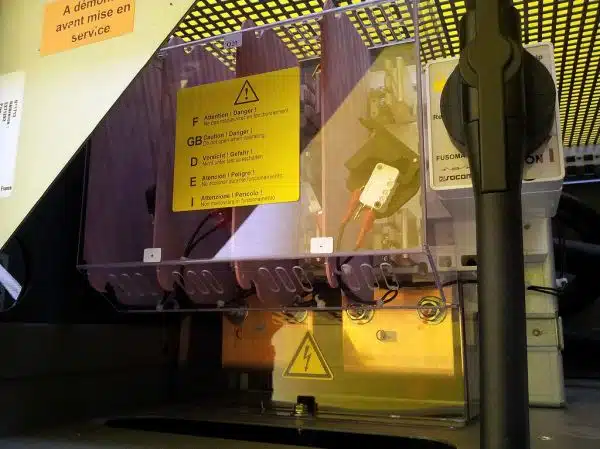

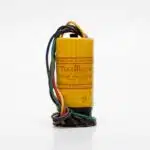



![How To Replace A Single-Pole Wall Switch 7 '... All in all it's just another [switch] in the wall.' ...](https://green-life.blog/wp-content/uploads/2023/05/17xmP5qMtVjq-150x150.jpg.webp)
